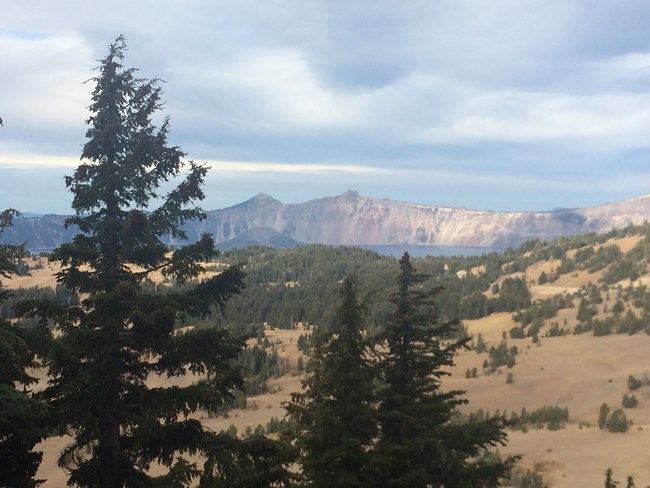
Crater Lake National Park's forests are significant in that they are mostly old growth. They form the bulk of the park's vegetation and define the park's landscape. The forest environments at Crater Lake are diverse and dramatic. Conifers dominate the park’s forests but a few deciduous species highlight streams and open areas. The forests are un-fragmented by human impacts such as commercial timber harvesting and grazing, and mostly un-fragmented by road development. Disturbances by wildland fire, insects (such as bark beetles), and pathogens (root rots, stem rots) have created a mosaic of differing ages and sizes across the landscape where trees die and regenerate. Trees are important for anchoring volcanic-based soils, storing carbon, providing shade, and contributing nutrients to the forest floor. Beneath the trees are grasses, herbs, and shrubs. Within the soils are fungi, bacteria, and invertebrates decomposing organic matter and generating nutrients. This combination of life from soil to tree canopy creates a variety of habitats for wildlife, and sustains healthy old-growth forests at Crater Lake. In a time when climate change, fire suppression, and non-native species are devastating forests around the world, the protection and the appreciation of Crater Lake’s old growth forests is immensely important. Follow this link to descriptions of trees growing in the park and the parks's tree species list. Follow this link for Information specifically about the whitebark pine. |
Last updated: March 14, 2019
